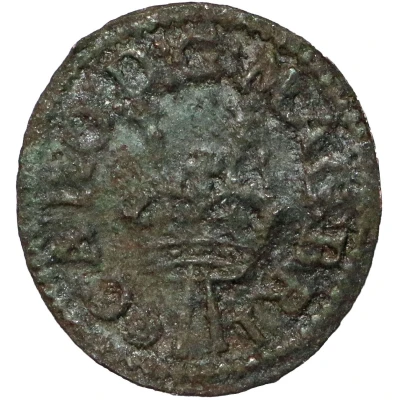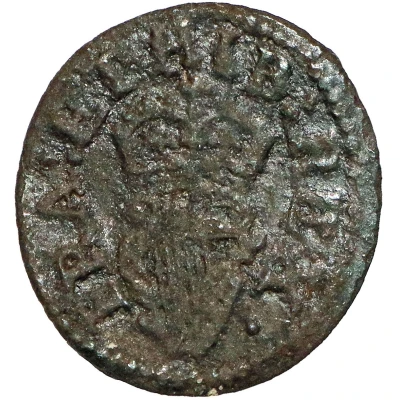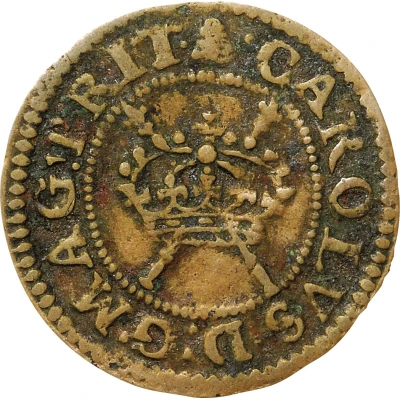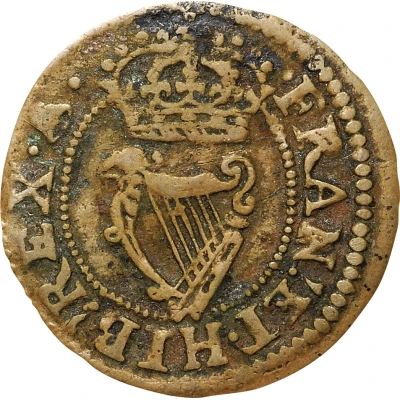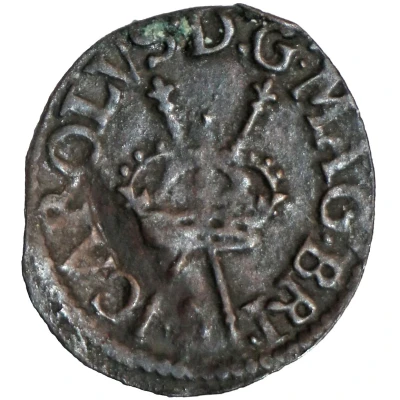
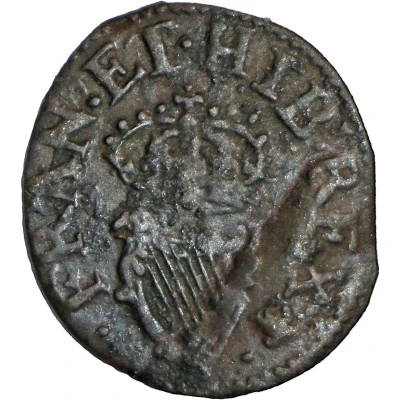

1 Farthing - Charles I Maltravers issue; type 4 ND
| Copper | 0.52 g | - |
| Issuer | Ireland |
|---|---|
| King | Charles I (1625-1649) |
| Type | Standard circulation coin |
| Years | 1634-1636 |
| Value | 1 Farthing (1⁄960) |
| Currency | Second Irish Pound (1460-1826) |
| Composition | Copper |
| Weight | 0.52 g |
| Size | 17 × 15 mm |
| Shape | Oval |
| Technique | Roller milled |
| Orientation | Medal alignment ↑↑ |
| Demonetized | Yes |
| Updated | 2024-10-05 |
| Numista | N#414684 |
|---|---|
| Rarity index | 95% |
Reverse
Eagle-headed harp with 7 or 8 strings.
Privy mark large lis at the end of the legend followed by a stop.
Script: Latin
Lettering: FRAN! ET. HIB! REX.
Unabridged legend: Franciae Et Hiberniae Rex
Translation: France and Ireland [King]
Comment
Everson Maltravers Type 4 141 Peck Type 5. Everson lists 5 variants based on 3 obverse legend varieties and whether the harp has 7 or 8 strings.
Minted at the Token House in London for use in Ireland. The Irish Maltravers farthings are oval and the obverse legend starts at 7 o'clock (with CAROLVS). The English Maltravers farthings are round and the obverse legend starts at 1 o'clock. Unlike the English farthings, the Irish Maltravers has no inner circle.
The die axis (0°), number of harp strings, number of jewels on the crowns and legend punctuation are indications of a genuine token. A counterfeit exists with a die axis of 180° and incorrect legends (Everson C93).
Interesting fact
One interesting fact about the Standard circulation coin 1 Farthing - Charles I (Maltravers issue; type 4) ND (1634-1636) from Ireland made of Copper weighing 0.52 g is that it was minted during a time of great turmoil in Ireland. The coin was issued during the reign of Charles I, who was facing opposition from the Irish Confederate Catholics, who were seeking greater autonomy for Ireland. This coin was minted at a time when the English Crown was trying to exert its control over Ireland, and it is a testament to the complex history of Ireland during this period.
